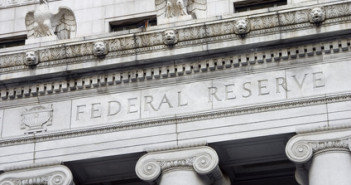Global equities are trading at all-time highs and the USD is broadly weaker as market participants are shifting into a risk on mood as earlier anxieties over crisis in the Eurozone have dissipated. Indexes in Europe, North America and global indexes such as the FTSE All World index are trading at or near all-time records which coincide with sharp declines in Greek debt yields. In absence of any clear market data it likely that this state of optimism has been underpinned by continued accommodative monetary policy on the part of the world’s central banks, two of which have outlined their policies in rather ambiguous terms over the past 24 hours leaving room for surprises in the future.
Starting off the Federal Reserve, we have seen continued strength in the labour market, capacity utilization and overall economic activity within the American economy. Governor Yellen has indicated that should these developments continue the Fed would want to drop its pledge to be ‘patient’ with interest rates and instead start considering interest rate rises on a meeting by meeting basis and that an interest rate rise could be considered at any meeting of the FOMC. While the market appears to have initially taken this as quite a dovish statement as reflected in USD and equity pricing, in terms of a policy shift it actually quite significant. What the Federal Reserve in effect is doing is shortening the time frame by which they will be making rate decisions and also signalling to the market that they can expect less forward guidance from the Federal Reserve it terms of its decision making process. The obvious implication of this shift is that changes in monetary policy can now happen on a much more expedited and unexpected basis. Without a clearly delineated schedule for interest rate decision making it is now much more likely that market participants can be caught out by Fed decisions.
Moving on to Governor Poloz, he struck a similarly ambiguous tone as his American counterpart in not giving a clear indication as to when or if the market can expect another rate cut. Instead, Poloz chose to focus on the surprise rate cut he affected in January saying that the surprise rate cut would buy time for the Bank of Canada to determine what the true net impact of the collapse in oil prices would mean for the economy. He said this proactive step would serve as insurance against the risks to inflation and financial stability that declining oil prices would present to the Canadian economy and he re-iterated that he expects the Canadian economy to be back at capacity by the end of next year. With that being said the anticipated rate cut in March now seems much less likely catching CAD bears flat footed with the Canadian dollar gaining over a cent in the last 24 hours reaching the low 1.24 handle versus the USD.
Beyond the Central Bank drama it is important to note that HSBC’s flash PMI numbers out of China today gave a glimmer of hope that things are not all bad in the Middle Kingdom. February’s slight expansion contrasts with expectations of a decline and ends two months of declines as China manages its transition to consumption based economy. The rebound in Chinese manufacturing has commodities trading higher with base metals and oil moving higher thus having a simulative impact on commodity exporters such as Canada, Australia and New Zealand.
Fuurther reading:
3 reasons why EUR/USD cannot really recover
EUR/USD, USD/JPY, GBP/USD Pivot Points, TA – Feb. 25 2015



